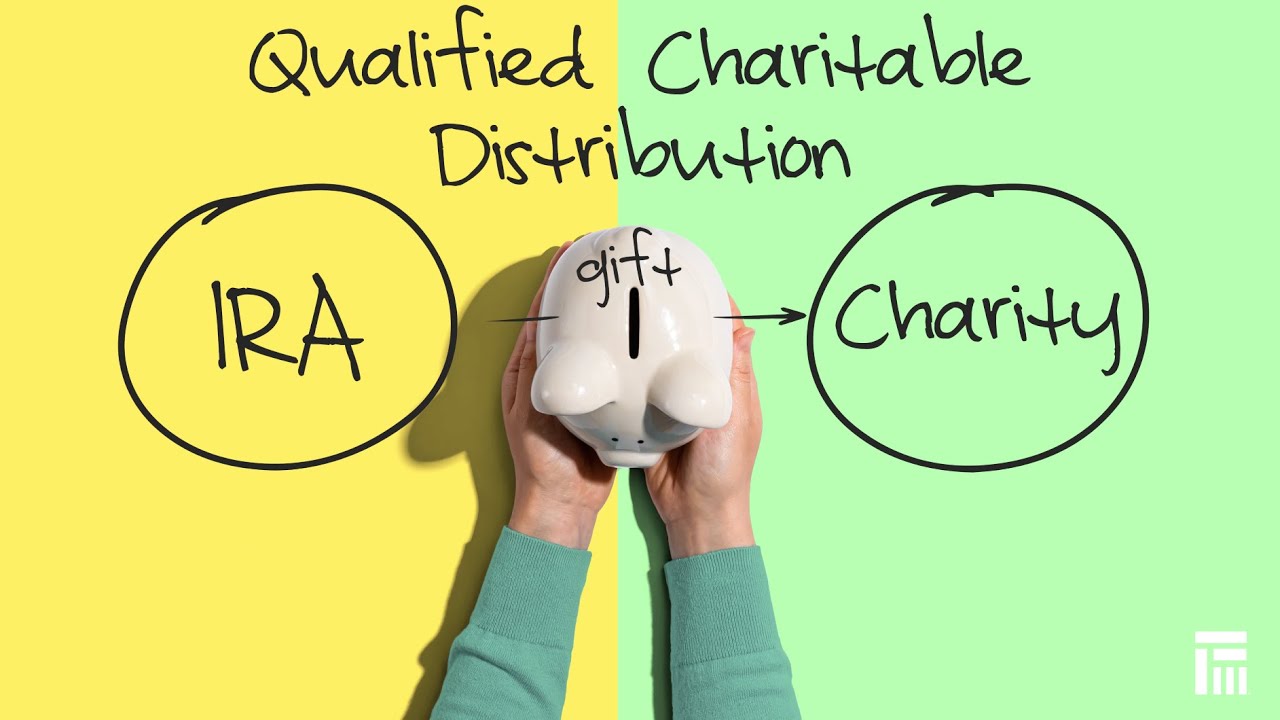Qualified Charitable Distributions From IRAs
What are Qualified Charitable Distributions From IRAs? If you’re a retiree aged 70 1/2 or older, consider taking advantage of legislation that allows you to reduce or eliminate the amount of income tax on IRA withdrawals transferred directly to a qualified charitable organization. You can use this tactic even though minimum distributions are no longer required until age 72. Referred to as Qualified Charitable Distributions (QCDs), they can also be used to satisfy all or part of your required minimum distribution.
Here’s an example:
Let’s say your required minimum distribution in 2022 is $22,000. If you make a qualified charitable distribution of $15,000 for 2022, you would need to withdraw another $7,000 to meet the amount required for your 2022 required minimum distribution.
Required minimum distributions (RMDs) must be taken each year beginning with the year you turn age 70 1/2, whether you are still working or not. The RMD for each year is calculated by dividing the IRA account balance as of December 31 of the prior year by the applicable distribution period or life expectancy. This rule does not apply to your Roth IRAs.
What is a Qualified Charitable Distribution (QCD)?
Generally, a qualified charitable distribution (QCD) is an otherwise taxable distribution from an IRA (other than an ongoing SEP or SIMPLE IRA) that is owned by an individual who is age 70 1/2 or over that is paid directly from the IRA to a qualified charity.
What are the Rules?
Unlike most tax-related rules, the rules for QCDs are fairly straightforward:
- You must be age 70 1/2 or older
- The QCD must be made from a traditional IRA, Roth IRA, or individual retirement annuity, but not from a simplified employee pension, a simple retirement account, or an inherited IRA
- The QCD must be a direct transfer from the IRA trustee to the charitable organization
- The organization must qualify for a charitable income tax deduction of an individual, that is, no private foundations (i.e., that give out grants)
- The organization must acknowledge the charitable contribution similar to a charitable income tax deduction or donor-advised fund
Tax Advantages of Qualified Charitable Distributions From IRAs
Generally, taxable IRA distributions must be included in adjusted gross income (AGI), even if donated to charity. You may be able to take a deduction for a charitable donation, but you could be subject to a 50 percent AGI limitation, which means you wouldn’t be able to deduct the full amount in that tax year and could be subject to income tax on the difference.
QCDs bypass this potential problem because they are exempt from taxation – and you get to take the full amount as a charitable deduction.
What this also means is that there is no increase in your AGI that could, for example, increase your income tax on Social Security income or cause Medicare insurance premiums to increase. It could also reduce deduction amounts for, say, medical expenses, which are limited to amounts more than 7.5 percent of AGI.
And, because there is no addition to income, you may be able to take the standard deduction (often a higher dollar amount and more beneficial than itemizing) and claim the deduction for a charitable contribution.
The $100,000 limit is annual, so you can take advantage of a QCD for as many years as you wish. Also, it applies to each spouse’s IRA. As such, up to $200,000 ($100,000 per spouse) could be donated in a given tax year and still qualify for the exclusion.
Reporting a QCD on your Income Tax Return
Charitable distributions are reported on Form 1099-R for the calendar year the distribution is made. You should receive Form 1099-R by January 31, 2023. To report a qualified charitable distribution on your Form 1040 tax return, you generally report the full amount of the charitable distribution on the line for IRA distributions. On the line for the taxable amount, enter zero if the full amount was a qualified charitable distribution and enter “QCD” next to this line.
You must also file Form 8606, Nondeductible IRAs if you made the qualified charitable distribution from a traditional IRA in which you had basis and received a distribution from the IRA during the same year, other than the qualified charitable distribution; or the qualified charitable distribution was made from a Roth IRA.
Questions about Qualified Charitable Distributions From IRAs?
Don’t hesitate to call if you want more information about qualified charitable distributions or have questions about IRAs and minimum required distributions for IRAs and how it affects your taxes.
Rex Crandell Firm in Walnut Creek, CA can be reached by calling 925-934-6320 or contacting us through our website!
Want to hear from recent clients? Visit Rex Crandell Firm on Yelp





